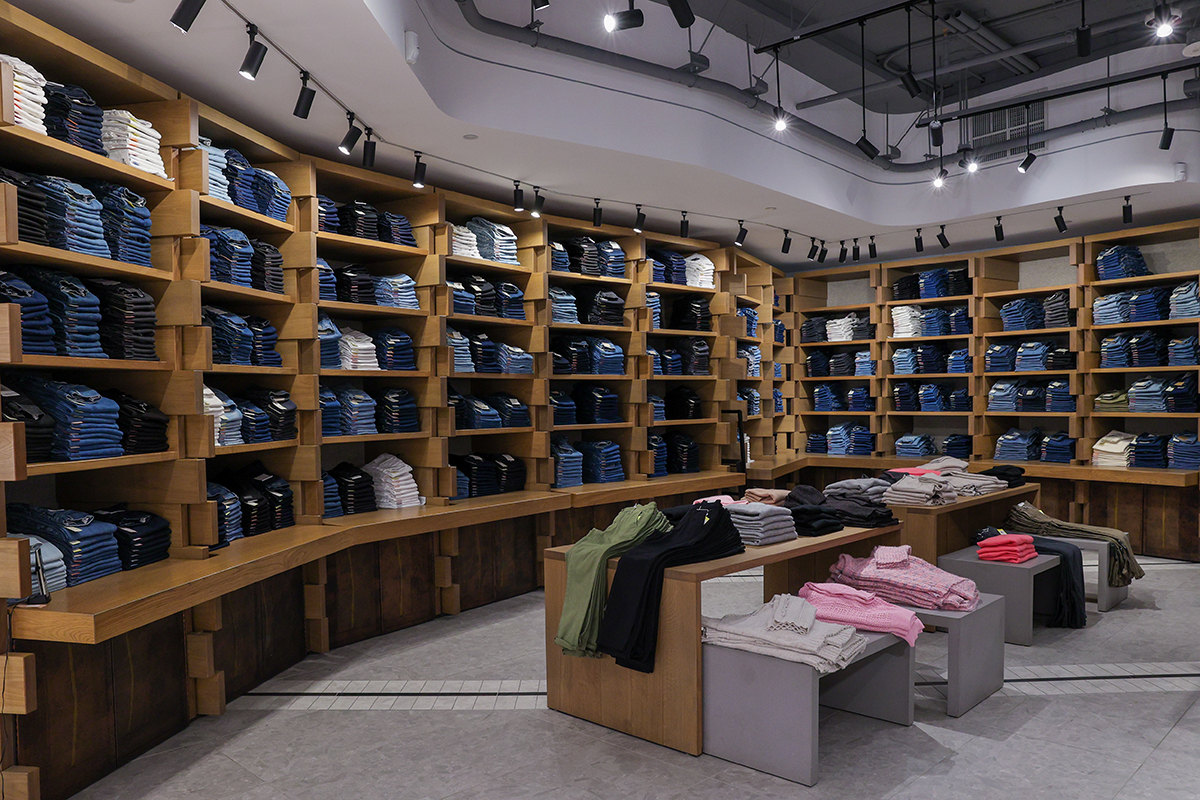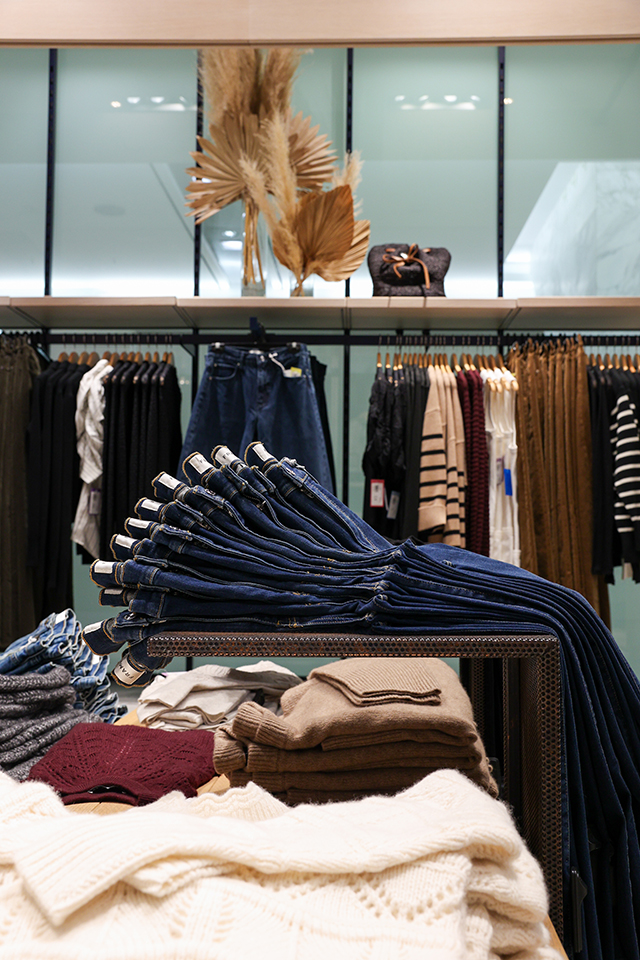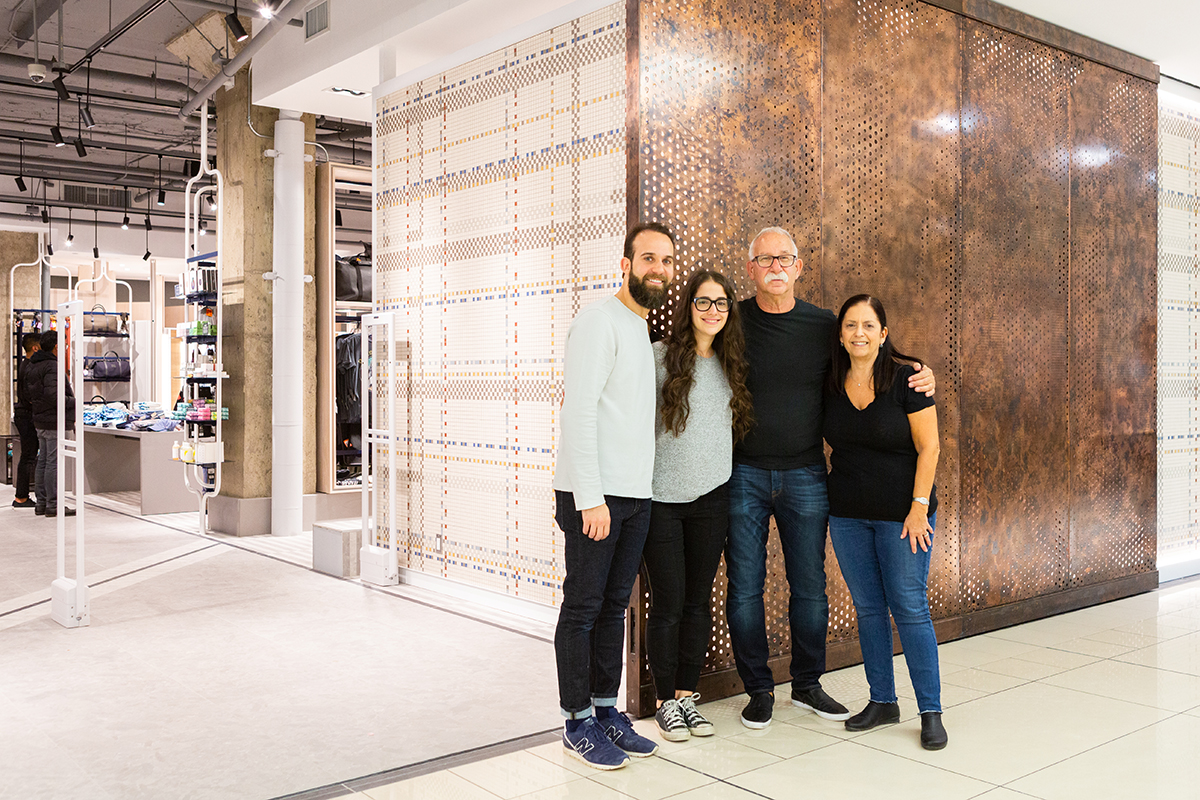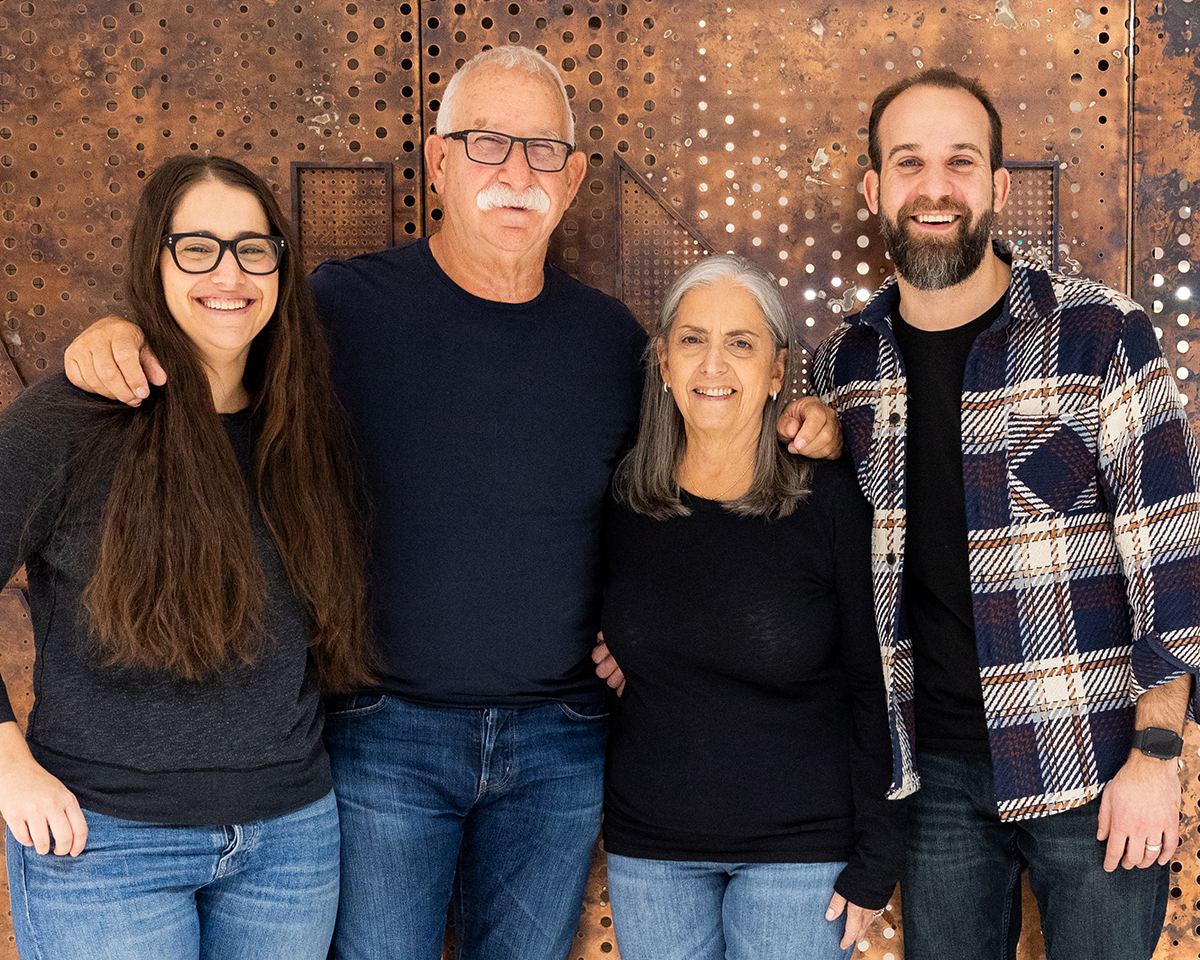FROM OUR NOVEMBER ISSUE: MILESTONES-50 YEARS! OVER THE RAINBOW, TORONTO, ONTARIO

The entire MR team proudly presents our November 2024 issue. If you haven’t received a hard copy, please page through our digital version, and we’ll continue to post individual stories here on MR-mag.com. If you haven’t been getting MR in print, be sure that you are on our mailing list for future issues by completing this form.
It started with denim in 1975, when jeans were “alternative.” Nearly 50 years later, denim is still the bread and butter at Toronto’s Over the Rainbow, an independent, family-run 6,500-square-foot store in the heart of the bustling shopping district on Bloor Street.
Joel and Jinni Carman (above, center left and right), along with their children Daniel and Amy (above right and left), own the business and consider themselves “bottom experts.” They carry tops to complement their denim, trousers, and joggers, not the other, more typical, way around.

That’s evident from the over 150 selections of denim in the store. These range from newer brands like Japanese Hiroshi Kato to Citizens of Humanity–Over the Rainbow was their first ever Canadian contract twenty years ago.
On any given day you’ll find a blend of tourists and locals, many multigenerational shoppers. A store that’s had such a lasting impact draws third, even fourth generation shoppers frequently.

appease their wide customer base.
“We see other stores that either haven’t evolved or evolved so much that they are unrecognizable,” says Daniel Carman.
So far, the store has done a good job toeing the line, sticking to the high-touch customer service, inclusive sizing, and free on-site tailoring that have made it so successful.

Online has been bustling, but they think of it beyond just a place for additional sales.
“We have an integrated inventory system. It’s an extension of our in-store inventory. Customers can see stock levels and styles and make more informed decisions when they come into the store,” Daniel says.
They also feature “coming soon” items that get customers excited to see what’s new as well. “It really is our primary marketing engine.”

“We’ll start developing products for ourselves, our own line, with the knowledge and taste level we have,” says Daniel.
The 50th will bring a ton of event activations but expect more in-store experiential events long past the anniversary year. Activations that carry a purpose and a story, whether it’s online, in-store, or around a product launch.
What they won’t stray from?
“Continuing to source the best brands in the market, pioneering upcoming brands and growing with those we’ve carried for decades,” Daniel says. “We are never going to stray away from what we are known for.’’
OTR’s denim business is 70/30, women/men, with an “athletic slim” look being most popular in men’s. “Washes vary, but as we move into Fall, we’re starting to see earth tones (grey, washed black, green, brown, off white) come back into
style,” notes Daniel.
What’s next in men’s denim? “We are noticing men growing tired of denim feeling like yoga pants. Men want denim to feel like denim again, combined with the comfort they have grown accustomed to. Denim brands and designers who strive to combine traditionally structured denim with comfort will win the race.”
OTR operates in the premium denim space, so AURs run around $285 Canadian, topping out at about $400.

“There is no question that sustainability is and will continue to be the way of the future,” says Daniel. “Where clothing is made and how it’s made (unfortunately) only affects a small minority of consumers’ buying decisions. We approach sustainability from a different direction–we
want every product purchased in our store to last the test of time. Quality-driven, long-lasting garments are more important to us than brand names. Premium retailers must continue to work relentlessly to distance ourselves from fast fashion. Offering sustainable, lasting garments is the solution.”



